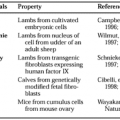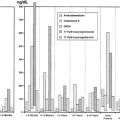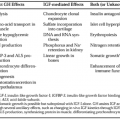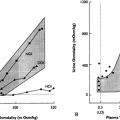GENERAL FEATURES OF HORMONE SYSTEMS AND HISTORICAL PERSPECTIVE
Part of “CHAPTER 4 – HORMONAL ACTION“
Multicellular organisms use intercellular communication mechanisms to ensure their survival by coordinating the responses necessary for adjusting to constantly changing external and internal environments. Two systems comprising several highly differentiated tissues have evolved to serve these functions. One is the nervous system, and the other is the endocrine system, which classically has been viewed as using mobile hormonal messages that are secreted from one gland or tissue to act on a distant tissue. There is an exquisite convergence of these regulatory systems. For example, neural regulation of the endocrine system is important; many neurotransmitters resemble hormones in their synthesis, release, transport, and mechanism of action; and many hormones are synthesized in the nervous system (see Chap. 175). The focus of this chapter is the endocrine system and how hormones work.
The word hormone is derived from a Greek term that means to arouse to activity. Classically defined, a hormone is a substance that is synthesized in one organ and transported by the circulatory system to act on another tissue. However, this original description is too restrictive, because hormones can act on adjacent cells (i.e., paracrine action) and on the cell in which they were synthesized (i.e., autocrine action) without entering the circulation.
Early studies concentrated on defining the endocrine action of hormones by removing or ablating an organ to localize the site of production. An extract of the tissue was then used to restore the function, and this served as a bioassay for subsequent purification of the hormone and the elucidation of physiologic and biochemical actions. This classic era of the study of hormonal action was descriptive. During this period, many hormones were discovered, and their major effects were defined. Because it was assumed that hormones had a unique source and a single or predominant action, they were named for the tissue of origin (e.g., thyroid hormone) or for the action (e.g., growth hormone).
The next era of investigation of hormonal action was characterized by the discovery of many more hormones and by a more detailed analysis of how hormones work. The investigation of their functions was aided by methods and ideas previously exploited by endocrinologists, including the use of radioisotopes, the concept of turnover, improved means of purifying molecules, and the availability of sophisticated analytic machinery. Such studies changed the direction of research in hormonal action from a descriptive (i.e., organ or tissue) to a mechanistic (i.e., molecule or function) approach. Where a molecule worked was no longer as important as how it acted. A single hormone could have hemocrine (i.e., transportation through the blood), paracrine, or autocrine actions but affect the different target cells in a similar way, and some effects could be produced by a variety of hormones. For example, naming a single molecule the “growth hormone” was incorrect, because this hormone is but one of several—including the thyroid hormones, sex hormones, glucocorticoids, insulin, and various growth-promoting polypeptides—that are involved in growth, and growth promotion is only one of the actions of the so-called growth hormone.
Stay updated, free articles. Join our Telegram channel

Full access? Get Clinical Tree








